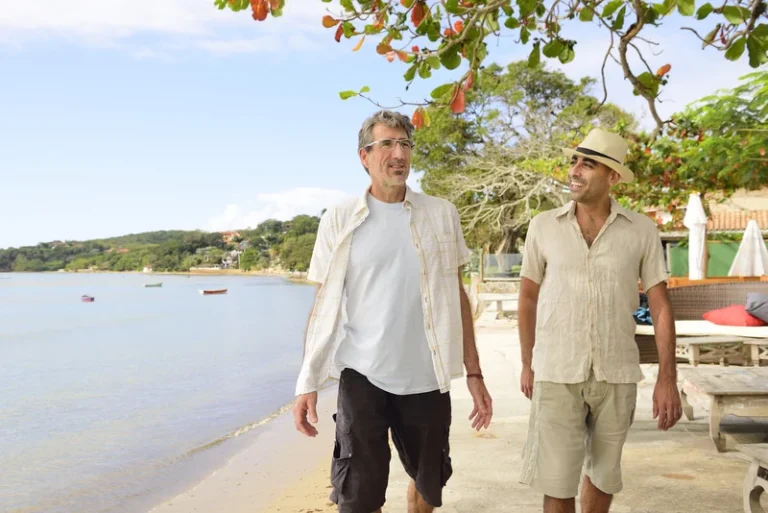
Individuals with this condition may experience flashbacks to the event or have nightmares. They may also feel intense emotions such as sadness, depression, and anger. Some people with PTSD may withdraw from friends or family and often avoid situations or people who remind them of the traumatic event.PTSD can happen to anyone, but women are twice as likely as men to experience this condition. These two conditions can cause the symptoms of the other to worsen and can make treatment particularly difficult.
Behavioral Treatments for Comorbid AUD and PTSD

The findings were published online on Sept. 2, 2012 by the journal Nature Neuroscience. Between six and eight of every ten (or 60% to 80% of) Vietnam Veterans seeking PTSD treatment have alcohol use problems. Binge drinking is when a person drinks a lot of alcohol (4-5 drinks) in a short period of time (1-2 hours). Veterans over the age of 65 with PTSD are at higher risk for a suicide attempt if they also have drinking problems or depression. Learn how having PTSD and alcohol use problems at the same time can make your symptoms of both, worse.
Cognitive behavioral conjoint therapy

Taken together, the papers included in this virtual issue on AUD and PTSD raise important issues regarding best practices for the assessment and treatment of comorbid AUD/PTSD, and highlight areas in need of additional research. First, all ptsd alcohol blackout patients presenting with AUD should be assessed for trauma exposure and PTSD diagnosis. Data from the Ralevski et al., (2016) paper demonstrate the powerful effects that trauma reminders have on craving and alcohol consumption and, therefore, treatment needs to address both the AUD and PTSD symptoms. With regard to behavioral treatments, exposure-based interventions are recommended given the greater improvement in PTSD symptoms observed, coupled with significant reductions in SUD severity experienced. The available evidence suggests that medications used to treat one disorder (AUD or PTSD) can be safely used and with possible efficacy in patients with the other disorder.
Mental Health Resources
- It forms the foundation of your new and exciting lifestyle choice, reinforcing your resolve and inspiring you to keep moving forward.
- Up to a third of those who survive traumatic accidents, illness, or disaster report drinking problems.
- Finally, given the heterogeneous nature of AUD120 and the complex etiology, course, and treatment of both AUD and PTSD, studies that examine commonalities underlying effective behavioral treatments are essential.
- Number of standard drinks for each beverage type was added together for total drinks per day.
However, traditional retrospective symptom and behavior assessments (e.g., Leesie et al., 2010; Ouimette et al., 2010) are subject to bias and cannot capture the interplay between alcohol use and PTSD as they unfold temporally from day-to-day. This type of fine-grained evaluation of alcohol use and PTSD would allow for a more nuanced examination of these symptoms, and thus a better understanding of how best to target treatment interventions. Behavioral intervention is considered a first-line approach in the treatment of PTSD. Several empirically supported behavioral interventions have been disseminated across populations and treatment settings. As with treatments for AUD, various treatment modalities for PTSD have been studied.

Behavioral Treatments for AUD

It may be especially challenging to mention treatment with a PTSD alcoholic spouse because they are a husband or wife, not their disease but by showing care and compassion, you could provide the motivation necessary to begin treatment. Integrated treatment that addresses both disorders is important to begin recovery.Treatment for co-occurring PTSD and alcohol use disordersmay include bothindividual therapy and group therapy. Medication is available to assist with PTSD symptoms that can cause setbacks like intrusive nightmares. A team of professionals at The Recovery Village can assist in designing a comprehensive treatment plan to suit someone’s specific disorders.
- The TLFB was completed using paper and pencil, and trained female interviewers were present and available to answer participants’ questions about converting their daily alcohol consumption into standard drinks.
- “Excessive drinking has been shown to increase the likelihood that someone will experience a traumatic event, including car accidents and episodes of domestic violence.
- The intervention uses personalized normative feedback (PNF) and was found to reduce number of drinks per week as well as binge drinking 1 month later.
- The authors emphasized that even though AUD was found to be less common in AA women as compared to EA women, AUD is still prevalent and problematic among AA women.
Integrated Behavioral Treatments
Further research is needed to better understand the findings and to identify factors that are related to the development of AUD in AA women. The authors emphasized that even though AUD was found to be less common in AA women as compared to EA women, AUD is still prevalent and problematic among AA women. Furthermore, research shows that AA individuals experience more severe symptoms of AUD as Sober living house compared to EA individuals (Mulia et al., 2009).

Symptoms of PTSD and Alcohol Use Disorder Differ by Gender.
- Furthermore, research shows that AA individuals experience more severe symptoms of AUD as compared to EA individuals (Mulia et al., 2009).
- Research suggests that chronic alcohol use may increase the risk for post-traumatic stress disorder (PTSD) by altering the brain’s ability to recover from a traumatic experience.
- Whether it’s connecting you with the right therapist or supporting you through difficult times, we embrace you as part of our community.
- Traumatic or stressful events trigger the release of endorphins, which are neurotransmitters that assist in reducing stress and pain.4 However, when the traumatic or stressful event subsides, the increased levels of endorphins also begin to decline.
- People seeking co-occurring PTSD and alcoholism treatment need to work with treatment professionals experienced in PTSD and alcohol treatment.
- It often results from sustained exposure to trauma, such as childhood abuse or violence.
Patients learn how to properly manage or prevent certain problems in this way. Since both alcohol and trauma https://ecosoberhouse.com/ improve endorphin production, opioid receptor blockers may be an effective part of PTSD care. To begin, two systematic reviews discuss the current state of behavioral (Simpson et al., 2017) and pharmacological (Petrakis & Simpson, 2017) treatments for comorbid AUD/PTSD. The Simpson et al. (2017) article extends prior reviews of behavioral treatments for AUD/PTSD by considering whether comparison treatment conditions are matched to the experimental treatment condition on time and attention, and by reporting on alcohol and drug use outcomes separately when possible. The Petrakis and Simpson (2017) review of pharmacological treatments is specific to the comorbidity of PTSD and AUD, as compared to other substance use disorders, and it includes several more recently published randomized controlled trials that are not included in prior reviews on this topic.
PTSD and Alcohol Abuse in Veterans
With regard to coping motives, the results indicated that as PTSD symptoms increased, drinking increased at a greater rate among those with higher coping motives than those with lower coping motives (Figure 1). Specifically, for every 1-unit increase in PTSD symptom severity, same-day drinking increased by a rate of 37% for those high in coping motives (i.e., 1 standard deviation above the mean) and only 10% for those low in coping motives (i.e., 1 standard deviation below the mean). For individuals with high enhancement motives (i.e., 1 standard deviation above the mean), drinking was steady, only increasing at a rate of 4% for every 1-unit increase in PTSD symptom severity.
